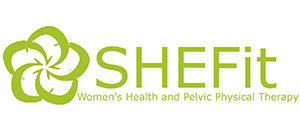Exercise for Back and Pelvic Pain during Pregnancy – get specific and get supervised!
We don’t all have the time or resources to keep up to date on scientific research pertaining to everything that ails us. So here is a summary for you of a great review on evidence based treatment of back and pelvic pain during pregnancy from the APTA women’s health section.
The August 2015 edition of the Journal of Women’s Health Physical Therapy published a review of recent research on the effectiveness of exercise in treating pregnancy-related low back and pelvic girdle pain (LBP and PGP). The article outlines some established but startling statistics. Lumbopelvic pain impacts up to 76% of pregnant women, 30% of whom must stop some of their normal daily activities due to pain, with symptoms prohibiting basic activities like sleep, climbing stairs, lifting household items, and exercise. LBP/PGP contributes to the development of postpartum depression, and raises the risk of developing chronic pain. 68% of women with moderate-severe pain report continued symptoms after childbirth, and 85% report recurrence during subsequent pregnancies. The review included research studies published in the past 10 years, targeting randomized controlled trials that compared a non-exercising control group with treatment groups participating in a variety of exercise programs. The analysis showed sturdy evidence that exercise does have power to reduce pain and improve function in pregnant women with LBP/PGP. However comparing the interventions used and effect sizes with each intervention suggested all exercise programs are not equal in addressing LBP/PGP. More specifically, programs that focused on progressive core strength and flexibility, were performed at least 60 minutes weekly, and were supervised by highly trained professionals like physical therapists were more effective than less specific programs that were unsupervised or supervised by less educated instructors.
Concluding remarks: “Achieving improvement in pain and function for patients with PR LBP/PGP that is sufficient to overcome exacerbation with advancing pregnancy requires an expert-supervised, core-focused, progressive and functional program with a regular home exercise component.” Belogolovsky et. al., 2015.
If you are pregnant and experiencing low back pain or pain in the hips and pelvis, make an appointment now! A women’s health PT is the most qualified practitioner to get you moving and empower you on the road to recovery!
For complete article visit http://mobile.journals.lww.com/jwhpt/_layouts/oaks.journals.mobile/articleviewer.aspx?year=2015&issue=05000&article=00002#ath

